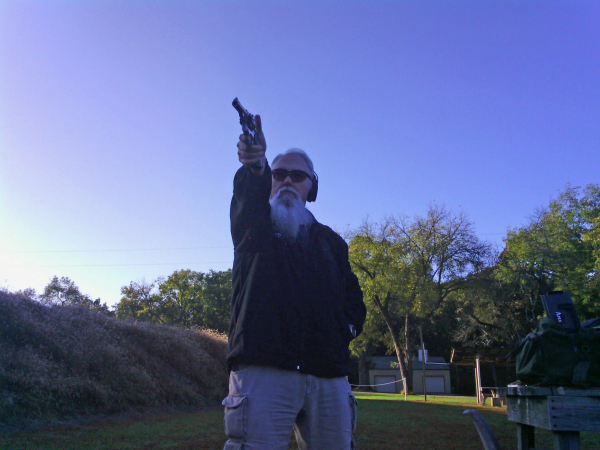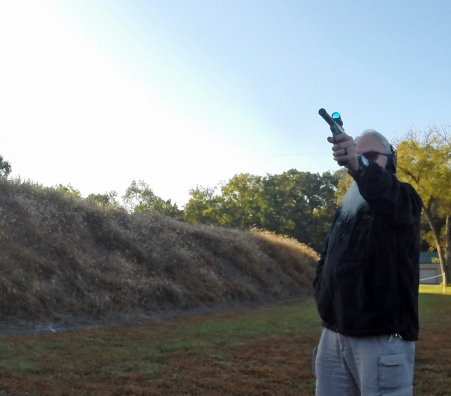If you last long enough, you’ll eventually run into a time when the medical types will conclude that it’s time to conduct examinations of your carcass that require some anesthesia. Those who’ve had various operations and intrusive medical procedures will nod sagely and, as they’re here to give comfort, can assure you “it’s no big deal.”
Well, it’s not until it is. And if you’ve been blessed with a reasonably long life that’s been free of such diversions, anxiety can result. Worse, you can be fairly numb, resigned to it all – that creating a little concern.
It’s all over-thinking the problem. As I was recently facing the specter of on-coming inspections of this order, I did what any reasonable person would do.
I went to the range.

It was fall, my favorite time of the year. Here, fall can be defined as “winter in the morning, summer in the afternoon” as one internet meme alleged. As it was time to rearrange the brain-housing unit, I took a pair of rimfire sporting handguns, an autoloader and a revolver.
The auto is an early Smith & Wesson SW22 Victory, a gun I had some months before they were publicly announced. I’d installed an after-market barrel – the Volquartsen carbon fiber THM tension barrel – and a red dot sight, the C-More RTS2. I’d fired the gun before and the average of groups from a variety of rounds clustered about 1 ½” at 25 yards.
The SW22/Volquartsen has a just under 7” barrel with a trigger press that’s plenty good.
The revolver was the Ruger GP100-22-4, a limited issue 10-shot revolver with a slightly-over four-inch barrel. A Davidson’s Exclusive – available from their Gallery of Guns -- this is two ounces lighter than their standard 5 ½” GP100-22. The Davidson’s Ruger is heavy.
It features a ten shot cylinder, matching the magazine capacity of the Victory.
The rear sight is the standard Ruger revolver adjustable sight. A fiber optic front sight, green, is atop and slightly to the rear of the muzzle. The front sight is in a dovetail, not the older style front plunger of the original GP-100. The muzzle is recessed and crowned.
The stocks are of GP/SP style, rubber with hardwood inserts. The barrel has an ejector rod shroud but has no under lug all the way to the muzzle as some versions of the centerfire revolvers do.
The current GP-100 22 guns are fabricated of stainless steel and that includes this exclusive model. The trigger has no serrations; the face of the trigger is smooth. This makes me believe they want me to shoot it double-action.
The single action trigger breaks clean and is service weight. The double action trigger can be staged, drawing the trigger and hammer back to a “pause,” confirming the sights and pressing off as a single action.
Why go to the range and why with these guns? Well, to get your mind off of a troublesome – and unavoidable – situation, engage in a little problem solving. I was facing the loss of control and sought to reestablish it.


So I started at around 25 yards, shooting B-8 bullseye targets one-handed, in the way of my youth. I started with the revolver, shooting it single-action as I had with my first centerfire handgun, a six-inch Colt Python at a state peace officers’ conference match in 1978.
After a pair of five-round strings, I moved to the optic-sighted auto with its fine trigger. With “no control,” I found that I shot okay with both guns – though the group with the auto was around half the size of the revolver’s, the score was the same.
I then did the same exercise left-handed – just to do it. Not surprisingly, I was in about the same place.
So I worked my control by shooting a few strings two-handed with each gun. I worked in close and noted the rather remarkable off-set between the center of the red dot on the C-More and the center of the bore of the Volquartsen barrel. There wasn’t near the off-set with the iron sights of the Ruger GP100, but again the group was nearly twice as big – shooting double action.
I backed out to forty yards with the SW22 on the B-8, giving up eight points out of 100.
The exercise didn’t change the facts of the situation nor the approaching unpleasantness, but it let me feel the sun, smell the fresh air, see the deer scampering across the range road – and the interstate highway on my return to town.
And it elevated my spirit. I think it was worth doing.
- - Rich Grassi